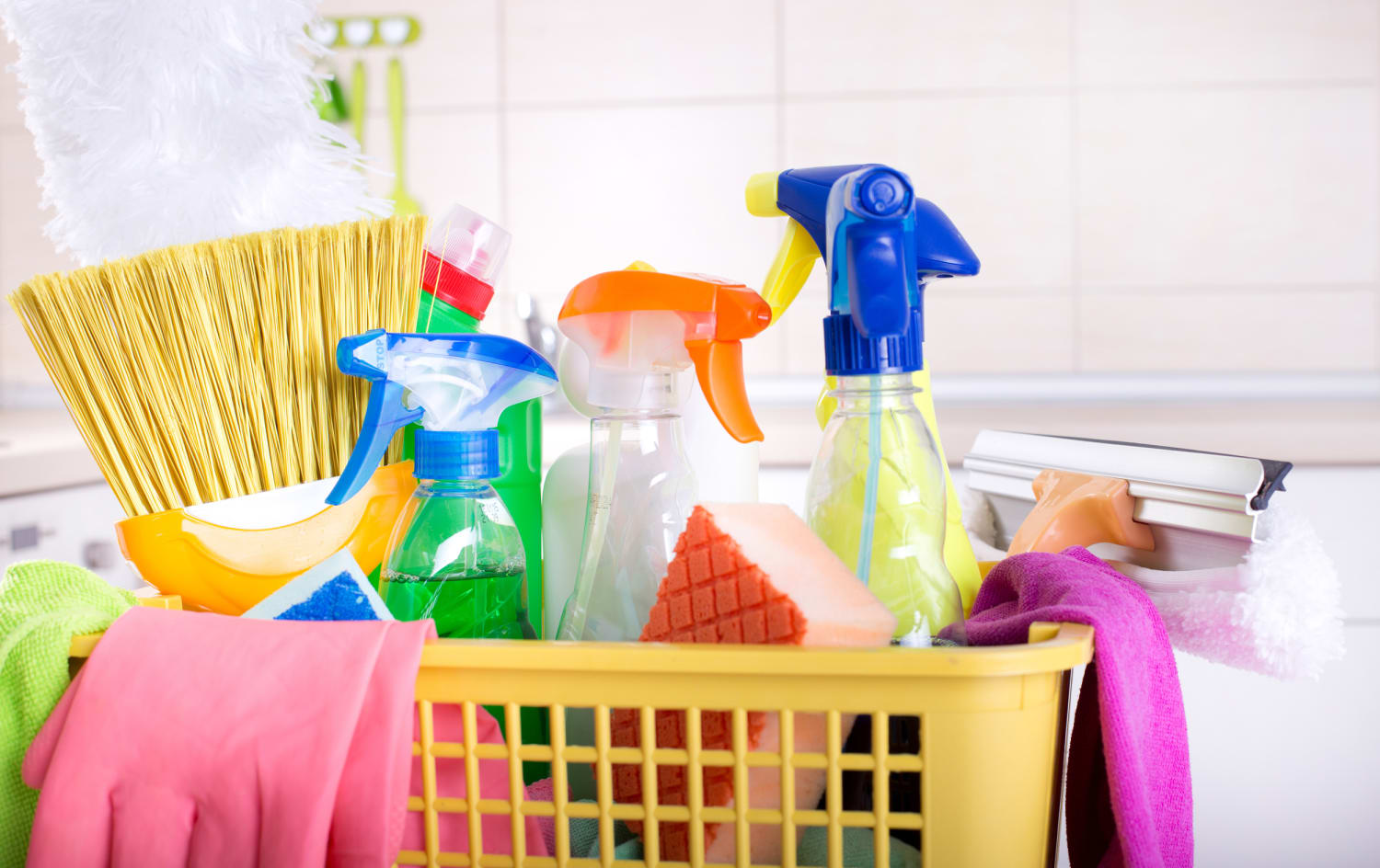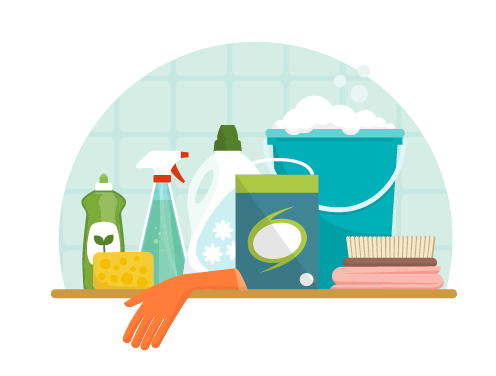Understanding the Demand for Thoroughly Decontaminating and Sterilizing Frequently Touched Surface Areas in High-Traffic Locations
In the world of public health and security, the precise disinfection and sanitization of frequently touched surfaces in high-traffic locations stand as critical steps in avoiding the spread of harmful pathogens. By discovering the numerous elements of surface disinfection, from the threats connected with neglecting cleansing methods to the effective techniques that can be utilized, a clearer understanding emerges of the important role these techniques play in guarding public health and wellness.
Value of Surface Disinfection
Stressing the complete sanitation of high-traffic surface areas is vital in preserving a sanitary atmosphere and protecting against the spread of harmful virus. High-touch surfaces such as door takes care of, light switches, lift switches, and countertops act as breeding grounds for viruses and microorganisms. Routine disinfection of these surface areas is important to reduce the danger of contamination and transmission of illnesses.
By applying a robust sanitation procedure, companies and institutions can develop a much safer environment for consumers, visitors, and employees. Appropriate surface area disinfection not only minimizes the spread of contagious illness but likewise imparts self-confidence in the cleanliness and safety of the properties. This proactive method shows a dedication to health and health, which is specifically important in high-traffic areas where the probability of direct exposure to pathogens is heightened.
In addition, surface area sanitation plays an essential role in general infection control techniques. Incorporated with hand hygiene practices, using masks, and keeping physical distancing, thorough disinfection of high-touch surfaces forms an extensive defense against the transmission of harmful microorganisms. Prioritizing surface sanitation is an important component of a holistic method to health and wellness and security in shared areas.
Dangers of Ignoring Cleaning Practices
Overlooking detailed disinfection of high-traffic surface areas dramatically enhances the danger of microbial and viral contamination, presenting a severe risk to the wellness and safety and security of people often visiting these spaces. Failing to apply proper cleansing techniques can bring about the build-up and spread of dangerous pathogens, consisting of microorganisms and viruses, on frequently touched surfaces such as doorknobs, hand rails, lift switches, and counter tops.

Additionally, overlooking the importance of complete cleaning not just endangers the wellness of individuals yet additionally undermines initiatives to preserve a sanitary and clean environment. It is crucial to identify the value of correct disinfection protocols in avoiding the spread of infections and safeguarding public wellness.
Effective Sanitation Techniques
To preserve optimal tidiness and reduce the danger of contamination on high-traffic surfaces, using efficient sanitation approaches is necessary. One of one of the most efficient and common sanitation methods is utilizing chemical anti-bacterials. These products can differ in stamina and make-up, with some targeting particular virus like bacteria or viruses. It is crucial to adhere to the manufacturer's directions for correct dilution, get in touch with time, and air flow when making use of chemical disinfectants to ensure their performance - Vacuum Carpets.
Another effective method is using UV-C light. UV-C light has been shown to be efficient in killing a broad array of microorganisms by disrupting their DNA structure, therefore stopping them from reproducing. It is important to utilize UV-C light effectively, ensuring that the proper strength and exposure time are applied to achieve the preferred disinfection results.
Furthermore, utilizing steam cleansing as a sanitation method can be very reliable, particularly on surfaces that are heat-resistant. Heavy steam can penetrate permeable surfaces and eliminate bacteria, infections, and other virus efficiently. When using vapor cleaning, it is necessary to make certain that the surface gets to the required temperature for an enough amount of time to assure proper sanitation.
Influence On Public Wellness
The maintenance of high standards of tidiness and sanitation on high-traffic surfaces plays an essential duty in guarding public wellness. Frequently touched surfaces in locations with high footfall, such as browse around here doorknobs, handrails, lift buttons, and bathroom centers, act as reproducing grounds for hazardous virus. Failing to appropriately sanitize these surface areas can bring about the rapid spread of contagious illness within neighborhoods. By applying extensive sanitation methods, the risk of transmission of infections, bacteria, and other germs can be dramatically lowered.
In high-traffic locations like airport terminals, institutions, medical facilities, and public transportation systems, the impact of strenuous disinfection measures can not be underrated. Focusing on the sanitization of regularly touched surfaces is an aggressive technique to promoting public wellness and boosting the security of individuals in common spaces.
Applying Routine Cleaning Up Protocols
Without delay instituting and sticking to a constant schedule of cleansing protocols is vital for maintaining the cleanliness and safety and security of high-traffic surface areas. Routine cleansing protocols are important in avoiding the build-up of germs and microorganisms on regularly touched surfaces, especially in areas with high foot traffic. By executing a methodical technique to cleansing, companies can successfully decrease the threat of disease transmission and develop a healthier atmosphere for staff members, customers, and the public.
To develop a reliable cleansing timetable, it is important to recognize high-traffic areas that need constant attention. These areas may include doorknobs, hand rails, elevator buttons, bathroom centers, and common equipment. Carrying out a regular cleaning regimen that targets these surfaces several times a day can substantially decrease the spread of harmful bacteria and viruses.
Furthermore, making use of appropriate cleaning agents and disinfectants is essential to making sure that surfaces are thoroughly disinfected. Normal training of cleaning team on appropriate cleansing methods and the significance of adherence to the cleaning routine is additionally vital in maintaining a hygienic setting. By focusing on constant cleaning protocols, organizations can promote the health and health of people that engage with these high-traffic surface areas.

Verdict
In conclusion, it is crucial to focus on comprehensive sanitation and sanitization of frequently touched surfaces in high-traffic areas to avoid the spread of hazardous pathogens and keep public health and wellness. It is necessary to identify the value of preserving click this link clean surface areas in high-traffic areas to make certain the health of the area.
In the realm of public wellness blog here and security, the meticulous sanitation and sanitization of often touched surfaces in high-traffic locations stand as critical actions in protecting against the spread of dangerous pathogens. By discovering the numerous facets of surface area disinfection, from the dangers associated with disregarding cleaning protocols to the efficient methods that can be utilized, a more clear understanding emerges of the vital duty these practices play in safeguarding public health and wellness.Additionally, using steam cleansing as a sanitation approach can be very efficient, especially on surface areas that are heat-resistant. When using steam cleaning, it is vital to make sure that the surface gets to the required temperature for an adequate amount of time to guarantee correct sanitation.
In conclusion, it is crucial to prioritize detailed sanitation and sanitization of frequently touched surfaces in high-traffic locations to avoid the spread of dangerous pathogens and preserve public health and wellness.